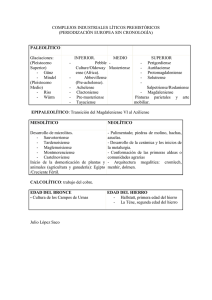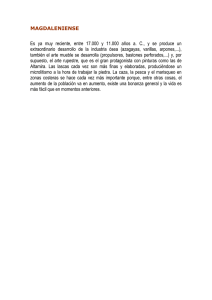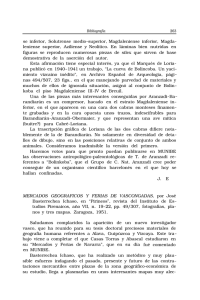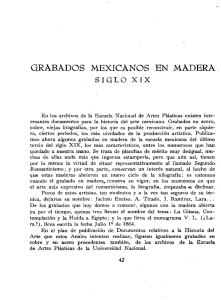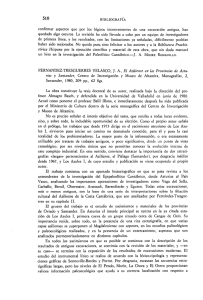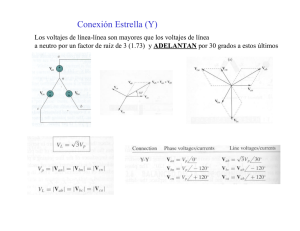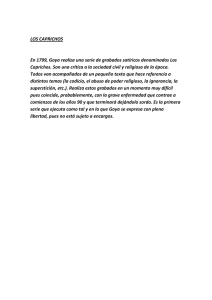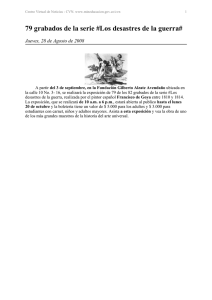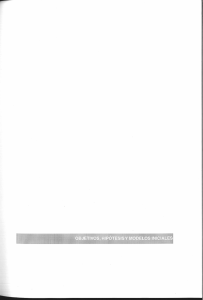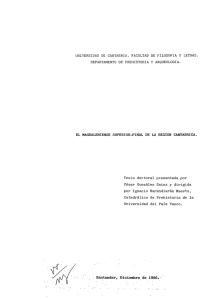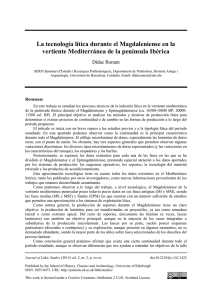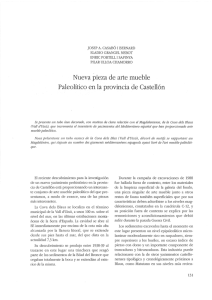RESUMEN El descubrimiento casual de un serie de
Anuncio
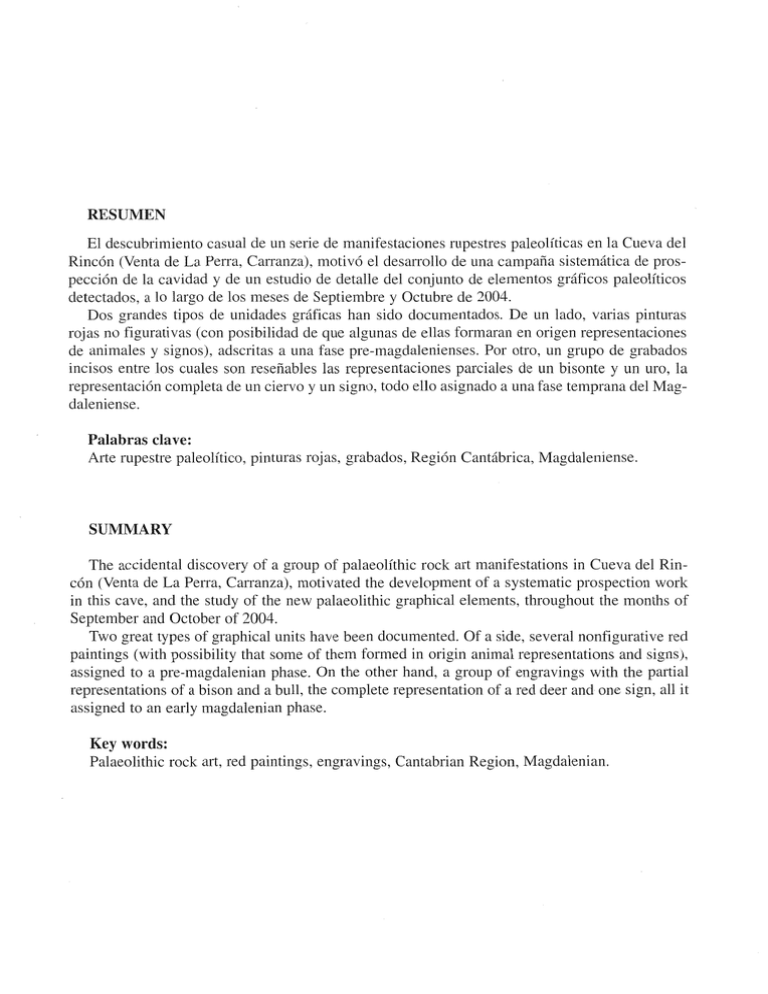
RESUMEN El descubrimiento casual de un serie de manifestaciones rupestres paleolíticas en la Cueva del Rincón (Venta de La Perra, Can-anza), motivó el desarrollo de una campaña sistemática de prospección de la cavidad y de un estudio de detalle del conjunto de elementos gráficos paleolíticos detectados, a lo largo de los meses de Septiembre y Octubre de 2004. Dos grandes tipos de unidades gráficas han sido documentados. De un lado, varias pinturas rojas no figurativas (con posibilidad de que algunas de ellas formaran en origen representaciones de animales y signos), adscritas a una fase pre-magdalenienses. Por otro, un grupo de grabados incisos entre los cuales son reseñables las representaciones parciales de un bisonte y un uro, la representación completa de un ciervo y un signo, todo ello asignado a una fase temprana del Magdaleniense. Palabras clave: Arte rupestre paleolítico, pinturas rojas, grabados, Región Cantábrica, Magdaleniense. SUMMARY The accidental discovery of a group of palaeolíthic rock art manifestations in Cueva del Rincón (Venta de La Pen-a, Carranza), motivated the development of a systematic prospection work in this cave, and the study of the new palaeolithic graphical elements, throughout the months of September and October of 2004. Two great types of graphical units have been documented. Of a side, severa] nonfigurative red paintings (with possibility that sorne of them formed in origin animal representations and signs), assigned to a pre-magdalenian phase. On the other hand, a group of engravings with the partial representations of a bisan and a bull, the complete representation of a red deer and one sign, all it assigned to an early magdalenian phase. Key words: Palaeolithic rock art, red paintings, engravings, Cantabrian Region, Magdalenian.
